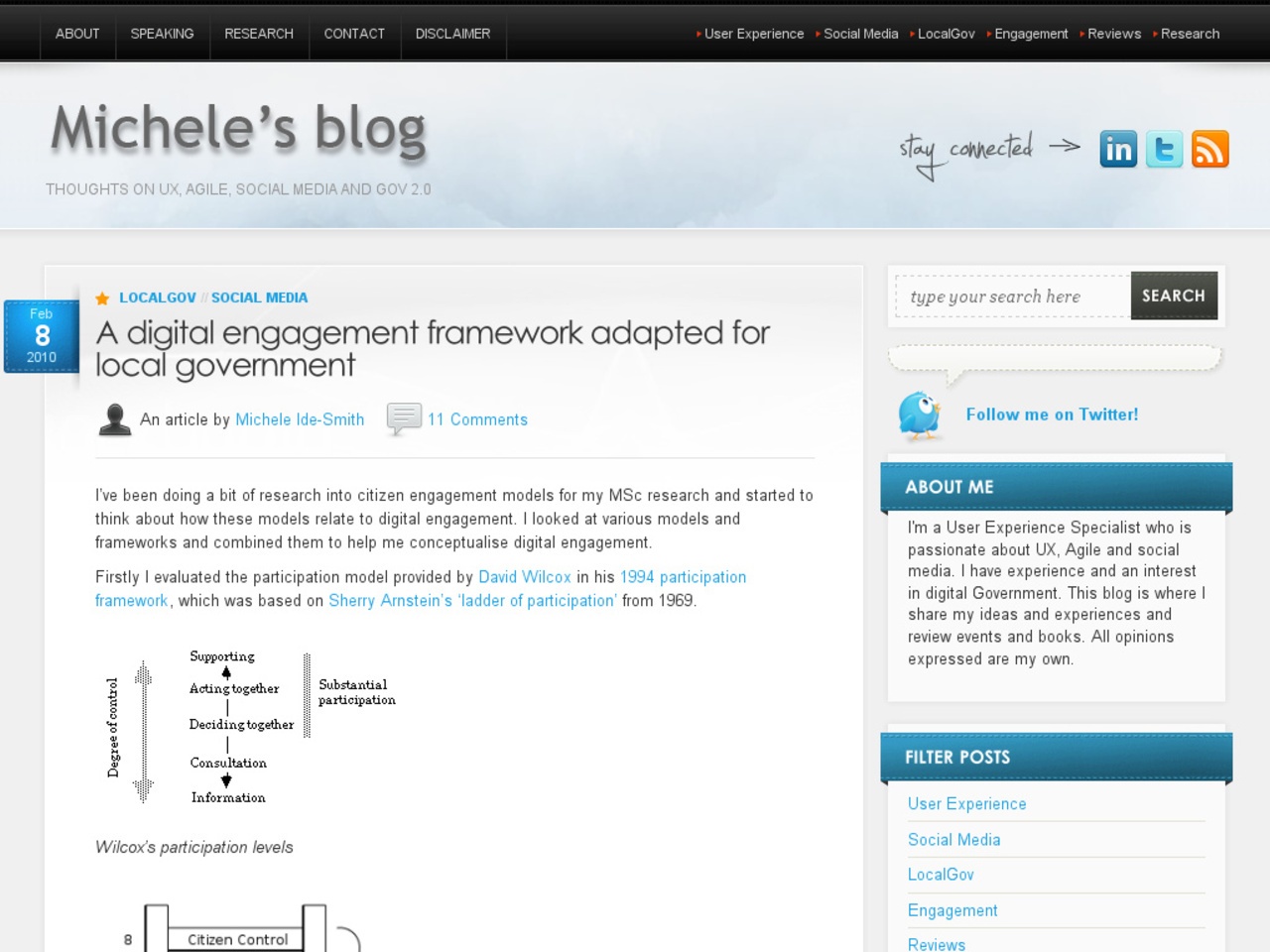Michele Ide-Smith: Digital engagement framework for local government
Visit: http://www.ide-smith.co.uk/?p=474
Michele Ide-Smith examines digital engagement from an academic standpoint as applied to local government organisations.
I’ve been doing a bit of research into citizen engagement models for my MSc research and started to think about how these models relate to digital engagement. I looked at various models and frameworks and combined them to help me conceptualise digital engagement.
Firstly I evaluated the participation model provided by David Wilcox in his 1994 participation framework, which was based on Sherry Arnstein’s ‘ladder of participation’ from 1969.
I noticed some similarities with Charlene Li’s and Josh Bernoff’s ladder of Social Technograph profiles. The profiles are based on survey research into consumer participation in social technologies. The ladder was recently updated to include a category for Twitter users!
The Groundswell site provides an interactive profiling tool which is based on demographic and behavioural data, to help companies define their commercial social technology strategies. However I think the tool has some transferable relevance for defining citizen participation profiles and assessing the propensity of certain age groups and genders to engage.
What would be really useful would be to overlay this behavioural data with the type of profile data that some local authorities have access to, either through OAC or Mosaic, along with other data layers, e.g. Council survey data, Place Survey data.
Li and Bernoff suggest various activities which the Social Technographs participate in. I have adapted these along the lines of Catherine Howe’s recent ‘long list’.
Lastly I thought about what type of roles might be involved at each level and drew inspiration from Steph Gray’s digital engagement roles. I have added other roles which are more relevant to local government, where communities are likely to play a more active role in engagement. Particularly where there are active hyperlocal sites in existence.
So, voilà! An adapted digital engagement framework for communities and local government. It’s a first draft so any comments welcome.
Follow @DigEngGuide for more examples and tips


 Everything
Everything